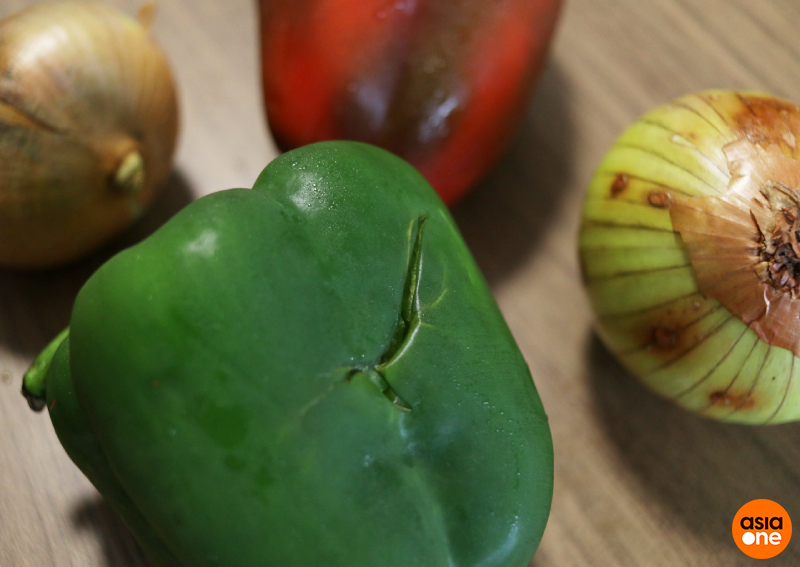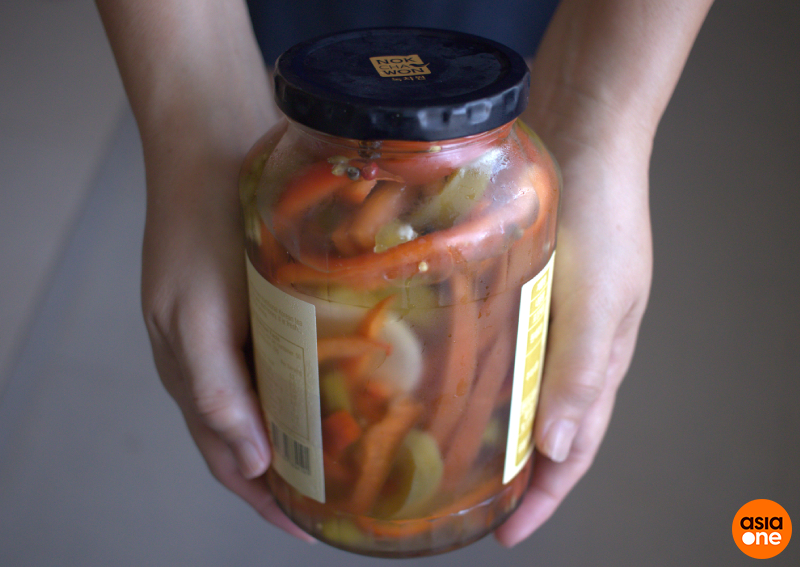 PUBLISHED ONMay 13, 2021 2:00 AMBYLynette Phua
PUBLISHED ONMay 13, 2021 2:00 AMBYLynette PhuaAsiaOne has launched EarthOne, a new section dedicated to environmental issues — because we love the planet and we believe science. Find articles like this there.
Human beings aren't perfect, so why is it that we expect beans, or any vegetable for that matter, to be?
Perfection is overrated — a little bump or discolouration doesn't render a fruit or vegetable inedible, but it is often discarded before it even reaches retail shelves in a phenomenon known as cosmetic filtering.
While 'pretty' foods are often picked over their uglier counterparts, most consumers don't even know they exist due to cosmetic filtering.
Out of sight, out of mind?
'Ugly' fruits and vegetables are a major source of food waste. According to market and consumer data provider Statista, the total amount of food waste generated in Singapore in 2019 was about 744,000 tonnes, almost half of which were fruits and vegetables. In that same year, only 18 per cent of the food waste generated was recycled.
744,000 tonnes — that's enough food to feed over two million people for a year.
In an attempt to break this cycle, I tried 'foraging' for 'ugly' vegetables and turning them into pickles.

Pickling food, an art that's been around for thousands of years, is one of the best ways to quickly use up near-expiring or unwanted produce and extend its shelf life.
And by 'foraging', I meant I went around asking if store owners had any vegetables they needed to clear as soon as possible, or by checking out their clearance section — tips that Augustine Tan, co-founder of cafe and grocery store UglyFood, gave me over a Zoom call. Admittedly, I didn't notice much 'ugly' produce in stores, except in Cold Storage's 'reduced to clear' section.
Armed with Augustine's tips, I headed off to the vicinity of The Marketplace @ 58 in Bedok and a Cold Storage outlet.
Here's what I got: three mixed capsicums ($1) and a packet of yellow onions ($1). I also spotted 'ugly' wing beans, kale and grapes, but I decided to pass on them because I wasn't confident in making pickles out of them, and food waste is the last thing I want.

Save 'ugly' produce and save money?
So the million-dollar question is, "are 'ugly' fruits and vegetables really cheaper?"
And the short answer is, yes. The 'ugly' capsicum cost $1 for 450g ($0.22/100g), while its good-looking counterpart cost $0.40 per 100g. The 'ugly' onions were $1 for 800g ($0.13/100g), while the 'normal' ones were priced at $0.25 per 100g.

The longer answer though, is a lot more complicated.
"People normally assume that 'ugly' foods are cheaper, and I do agree that it should be a bit cheaper unless it's just a small blemish on the surface. [Stores] only give a huge discount when [an item] has a low shelf life and needs to be used immediately," shared Augustine, who has been running UglyFood for over four years.
Adding to that, the 25-year-old confessed that they price their produce close to that of FairPrice.
"We realised that if we price [our produce] too cheap, it will just result in more food waste eventually. It is something that we are trying to avoid, but it's tricky on our part because we do have access to [huge amounts of] wastage," Augustine, whose company has saved over 400 tonnes of food, revealed.

From 'waste' into something totally edible
Jars of pickles may be easily available on the store shelves, but there's something satisfying about turning a fruit or vegetable that would otherwise be 'waste' into something delicious.
Here are the ingredients you need to make your own pickles:
- Capsicum - 3 medium to large ones
- Onion - 1 large
- Salt - 1/2 tablespoon
- Apple cider vinegar - 2 cups
- White vinegar - 2 cups
- Water - 2 cups
- Granulated sugar - 1 cup
- Garlic - 4 cloves
- Whole peppercorns - 1/2 tablespoon
- Mustard seed - 1/2 teaspoon
- Celery seed - 1/2 teaspoon
Want an easier recipe? Just use these:
- Capsicum - 1 medium to large one
- Onion - 1 medium
- Apple cider vinegar - 1/2 cup
- Water - 1/2 cup
- Honey - 3 tablespoon
- Salt - 1/2 teaspoon
- Whole Peppercorns - 1 teaspoon
All you have to do is slice the capsicum and onion, pack them tight in a sterilised glass jar, boil the rest of the ingredients and pour the brine into the said glass jar. Let it cool completely before transferring it into the refrigerator, and you'll have pickled capsicum and onion in two days.

The best part? The pickles can be kept in the refrigerator for up to one whole year, and are perfect in sandwiches, salads, and especially with grilled meats!
I shared it amongst my friends and they loved it.

"It's super fresh and tart, goes great with instant noodles even," shared one friend.
Tips on differentiating between the 'ugly' and the inedible

To the everyday consumer who has been programmed to be picky about their produce's looks, switching to buying 'ugly' foods may be tough.
Some may not even know the difference between 'ugly' and inedible.
Here are three tips by the food waste guru Augustine:
- Learn to identify where their 'ugly' scars come from. Was it from weather, like strong winds causing them to bump into each other, or were they 'tortured' by humans, or are they just bloated and about to spoil?
- After using your sense of sight, touch it to check if it has gone soft (and perhaps, rotten).
- If you're still unsure whether it's edible after using sight, smell and touch, taste it. Sounding it out is no use — even for watermelons. "But if you're using your sense of taste, it's probably far gone [from being edible]," said Augustine with a laugh.
Looking to rescue some 'ugly' produce and turn them into pickles, or perhaps jam? You can get them at Food Rescue Sengkang, UglyFood or even just your neighbourhood market stalls.
Interested in helping to rescue food and contributing to charity organisations? Head over to SG Food Rescue to do so.
Now, who's keen to turn 'ugly' food into a beauty in your jars?
lynette@asiaone.com

